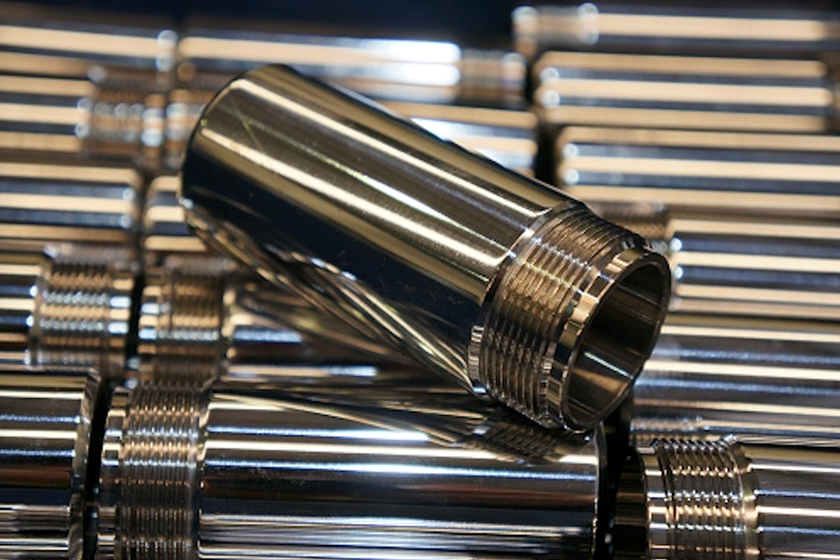Cleaning Pre-Shot Peen
I am wondering what is commonly done to clean newly machined aluminum parts prior to shot peening?
Q. I am wondering what is commonly done to clean newly machined aluminum parts prior to shot peening?
Machining fluids contain surfactants for the purpose of adhering to a surface that dry to a film on the part that was machined. I have also observed that very small metal fines produced during deburring can often find their way to stick into the machining fluid film. These metal fines can resist considerable air blow off and still remain. Therefore the need is for a cleaning that dissolves the machining fluid residue, is friendly to our operators, accepts the metal fines, dries quickly, doesn’t initiate corrosion or pit 2000 series aluminum, and leaves no residue of its own.
Featured Content
So with these details what cleaning fluid might be suggested? We are prepared to do some testing. J.S.
A. Thanks for the background information. Even though you completely understand your own process, the added information helps me better understand what it is you are trying to accomplish. I assume from the name of your company, you are making propellers and would guess that these start out as some sort of casting.
You are correct that machining fluids will have a tendency to hold fines against the metal surface. It is also likely that the machining fluid you are using is water based or diluted with water. The surface tension for water is quite high and will have a strong capillary effect to hold the particles in place. The surface tension is a force per surface area and the fluid will cover the entire surface area of the part and the metal fines. So, as you have discovered, the force to drive the particulate off the part is considerable, especially since much of the force of the air blow-off is wasted not hitting the surface of interest (the particle) and goes to blowing on and around the part.
To get rid of the particles, you need to use a cleaner that will reduce the surface tension enough to make removal easier. Most aqueous cleaners use a blend of surfactants that will significantly lower the surface tension of water. However, that alone will likely not be enough to remove all residues. Additional mechanical force along with the cleaner lowering the surface tension will provide the best results for complete particulate removal.
That mechanical force can take a variety of forms. If currently doing immersion cleaning, the addition of eductors can greatly increase the agitation and turbulence of the bath (more than air agitation alone). Another technique is the use of ultrasonics in an immersion tank. The ultrasonic transducer will vibrate creating waves in the liquid. The liquid will create cavitations at fairly high energies throughout the tank. That energy, along with the reduction is surface tension from the cleaner will be able to remove the particulate.
Alternately, spray washing could be effective if the stream of liquid can adequately reach all surfaces of your parts. This could be done with a relatively inexpensive manual spray-wand type of system. Alternately, it could be automated with a conveyorized spray wash system where you could either put parts on a conveyor belt or hang them on a conveyor line.
The choice of cleaner will need to be one that is aluminum safe. Many aqueous cleaners include builders that are good for buffering a cleaner, but may attack aluminum due to a relatively high pH. As a result, if using an alkaline cleaner, choose one that is formulated to contain silicates so that your parts are not attacked by the other alkaline builders in the system. You may also want to consider a near-neutral cleaner for this system. They tend to be a little weaker, but could be effective if used in conjunction with the mechanical force from the equipment.
With many of the equipment choices above, it may require the use of a low foaming cleaner since the agitation may have a tendency to create foaming. I would suggest going online to the Products Finishing home page at www.pfonline.com. Then select “Supplier” and from that page select “Cleaning and Pretreatment”. That will get you to suppliers of both the equipment and chemicals you need to adequately clean your parts. The equipment suppliers will be able to take a closer look at your process and factory footprint in order to make a better recommendation. One last consideration would be a good filtration system to remove these fines from the cleaning tank after you have gotten them off your parts.
RELATED CONTENT
-
The Hull Cell: Key to Better Electroplating - Part I
How to use it for planning, preventive maintenance and troubleshooting.
-
Top Reasons to Switch to a Better Cleaning Fluid
Venesia Hurtubise from MicroCare says switching to the new modern cleaning fluids will have a positive impact on your cleaning process.
-
Are TGIC-Free Powder Coatings Right For You?
This alternative to TGIC-based polyester powder coatings offers similar performance and enhanced transfer efficiencies.



















